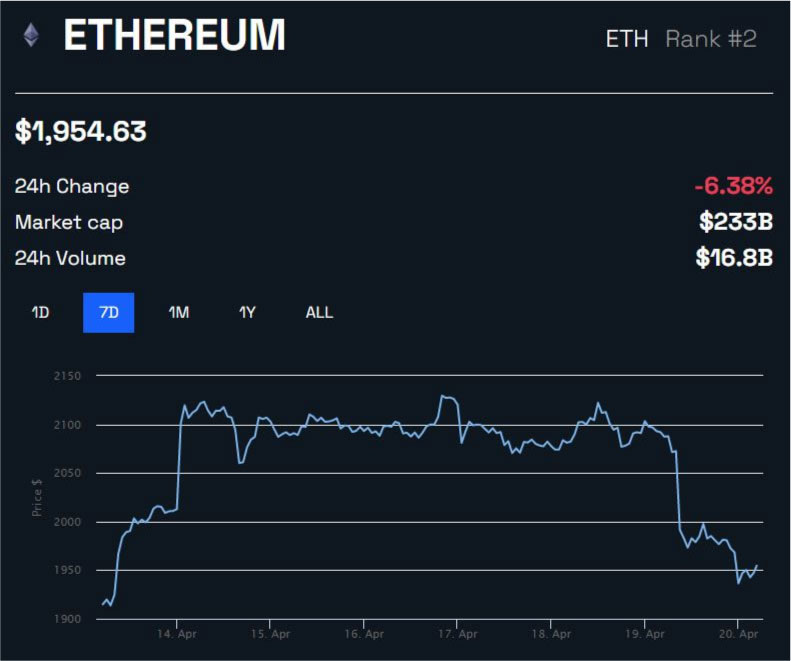The recent Shapella hard fork was a significant milestone for Ethereum, but the journey is far from over. The Ethereum roadmap is packed with more major upgrades that are set to revolutionize the network into a lightning-fast world decentralized crypto-economy.
Next in line is the Cancun hard fork, scheduled for the third or fourth quarter of 2023, which will implement EIP-4844, introducing “Proto-Danksharding” technology. This groundbreaking innovation empowers rollups to add cost-effective data to blocks, reducing network fees and enhancing scalability.
With the introduction of “data blobs,” which are temporary and inaccessible to the EVM, rollups can send data at a lower cost. This translates to cheaper transactions for users, paving the way for a more efficient and cost-effective Ethereum ecosystem.
As Ethereum continues to evolve and build upon its roadmap, the future looks promising for a network that aims to transform the way we interact with blockchain technology.
Ethereum Roadmap Milestones
Distributed Validator Technology (DVT) is a significant milestone on Ethereum’s roadmap, addressing the current technical complexity of solo staking for validators with 32 ETH and the centralized nature of staking services offered by exchanges. DVT aims to simplify the process of “squad staking,” allowing users to pool their capital with friends or other participants and relax, as explained by Bankless on April 20. Obol Labs is actively working on a DVT solution that is expected to be deployed before 2024.
Another major milestone on Ethereum’s roadmap is proposer-builder separation (PBS), which aims to tackle the challenges posed by MEV attacks (maximal-extractable-value). As per Bankless’s report, proposer-builder separation (PBS) aims to establish a distinct division of labor between two crucial aspects of block-building: the proposal of a block and the actual process of building it. This upgrade is expected to reduce MEV activity on the Ethereum network, but it is not anticipated to be rolled out for at least another two years.
In summary, Ethereum’s roadmap includes significant milestones such as Distributed Validator Technology (DVT) and proposer-builder separation (PBS) that are expected to bring improvements to the network’s staking process, address MEV attacks, and enhance the overall functionality and security of Ethereum. These upgrades are anticipated to have a transformative impact on Ethereum and its ecosystem, but their implementation may take some time as development and testing efforts continue to progress.
Ethereum prices have experienced a decline as the broader crypto markets undergo a correction. Despite still being up by 12% over the past month, further losses may result in the asset retracing towards the support level around the $1,850 zone. Ethereum’s current value is down by 60% from its all-time high of $4,878, which was reached in November 2021. However, it’s worth noting that market corrections are a normal and expected part of the crypto market’s behavior, and this downturn is in line with the broader trend in the industry.
Ethereum is poised for an exciting future with several significant events on the horizon. The Ethereum 2.0 upgrade, EIP proposals, cross-chain interoperability efforts, and the continued growth of the DeFi ecosystem are all expected to shape the future of Ethereum and contribute to its evolution as a leading blockchain platform. As the Ethereum community continues to innovate and navigate the ever-changing landscape of crypto payment technology, the future looks promising for Ethereum and its potential to revolutionize industries.
Follow for more:
Telegram: https://bit.ly/3KbviBe
Twitter: https://bit.ly/3Zr6h9E
Website: https://bit.ly/3FWBaMc
